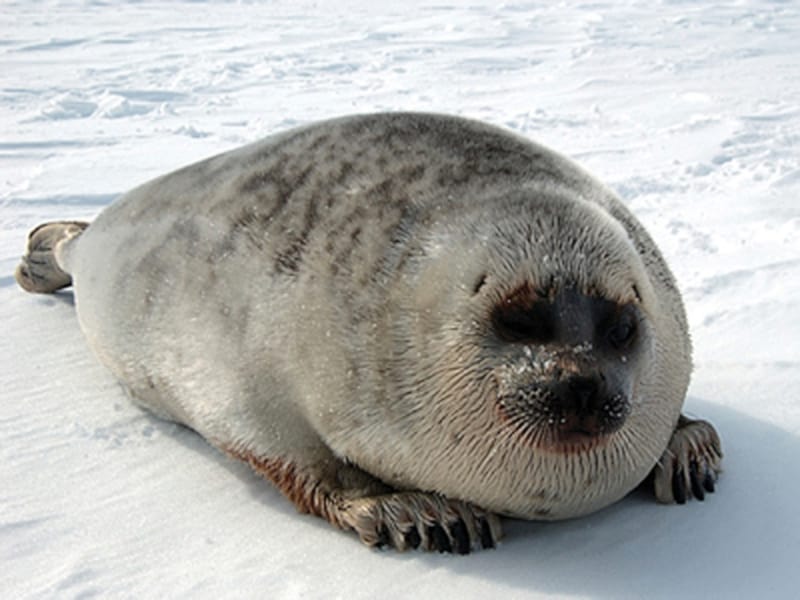
Ringed Seal Facts
- The Ringed Seal represents the smallest and perhaps the most adorable of all species of seal. It also ranks as the most numerous of all seals.
- An exact count of the total population of the various colonies of the Ringed Seal has never proven possible.
- However, official estimates place its population number at between 2-3 million.
- Due to its great numbers, the IUCN has listed the animal as a Species of Least Concern.
- However, like all ocean life largely dependent on Arctic ice, it remains threatened by climate change (like us all).
Related Articles
Ringed Seal Physical Description
The beautiful Ringed Seal attains an average length of roughly 69 in (175 cm) and a body weight of as much as 308 lb (140 kg). Even the smallest seal is still pretty big.
The head of the Ringed Seal remains relatively small, and the body is comparatively plump. There are also several subspecies, ranging in size.
The name comes from the presence of dark silver-colored rings on the sides and back. The belly is usually a light silver.
It also has surprisingly powerful claws on the front flippers.
- Kingdom: Animalia
- Phylum: Chordata
- Class: Mammalia
- Order: Carnivora
- Family: Pinnipedia
- Genus: Pusa
- Species: P. hispida
Ringed Seal Distribution, Habitat, and Ecology
The Ringed Seal inhabits territories throughout the Arctic Ocean. This rather wide area of habitation (along with its numbers) thankfully helps to ensure the survival of the species.
The animal also generally prefers to inhabit areas of the ice floe.
Individuals feed on a wide variety of prey, primarily consisting of fish and invertebrates, and typically hunt alone.
In addition, polar bears, orcas, and Greenland sharks constitute its own primary natural predators.
During breeding season, the female typically gives birth to a single pup.
The natural lifespan of this rather remarkable animal equals about 25-30 years.
Species Sharing Its Range
Check out our other articles on Sea Otter, Orca, Gentoo Penguin, Galapagos Penguin, Adelie Penguin, Blue Footed Booby, Albatross, Amazing Conservation Photography, Red Trillium
